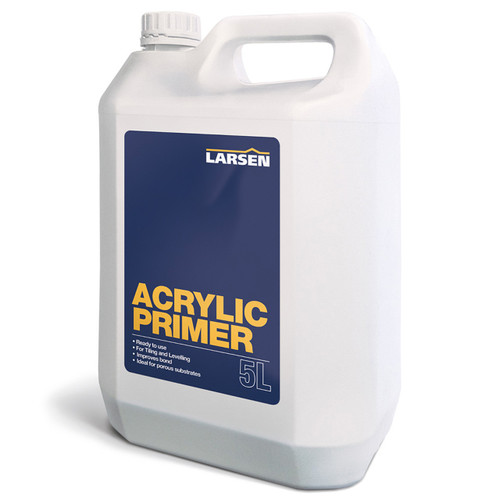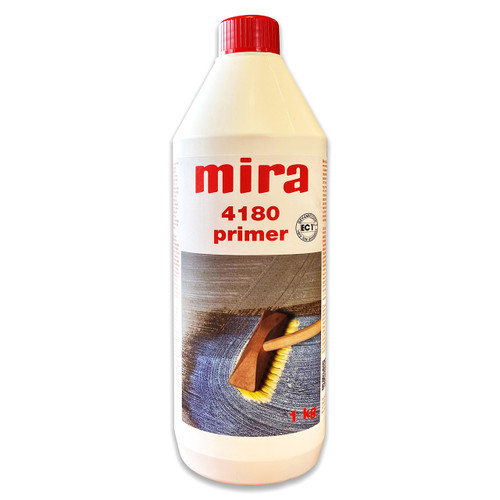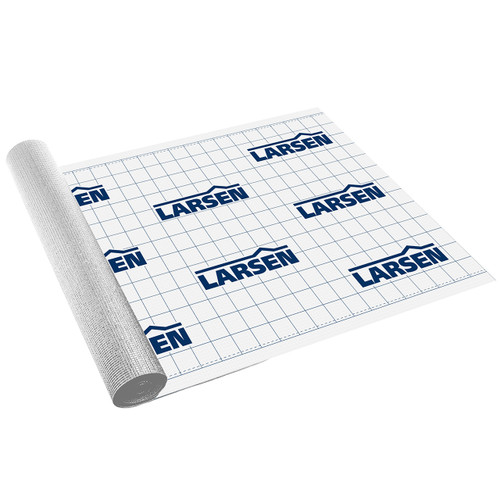
Larsen Ready to Use Acrylic Primer - 1 Litre
Larsen Ready to Use Acrylic Primer - 1 Litre
Acrylic Primer is a ready to use primer for use on porous and difficult substrates prior to tiling or screeding, or to seal gypsum plasters or screeds prior to the addition of cement based adhesives.
Acrylic Primer is a ready to use primer for use on porous and difficult substrates prior to tiling or screeding, or to seal gypsum plasters or screeds prior to the addition of cement based adhesives.
It can be used neat when sealing substrates or diluted with an equal quantity of water for general priming.
- Water-based polymer emulsion
- Ready to use primer
- Improved adhesion
- Coloured to indicate application
Coverage:
When used neat: 1 Litre will cover approx. 7 – 10 m2
When diluted 1:1 with clean water: 1 Litre will cover approx. 14 – 20 m2
DIRECTIONS FOR USE
PREPARATION
the substrate should be hard, structurally sound and stable and of sufficient strength and dimensional stability for the intended use. the surface should be surface dry and free from significant amounts of laitance, dust or other contamination which may affect adhesion.
APPLICATION
Acrylic primer is supplied ready for use, but may require dilution with equal volumes of clean water for some applications. Diluted primer should remain usable for several days, simply mix well before use.
Acrylic Primer can be used to prime all dense and porous surfaces prior to application of any of the range of Larsen Tile Adhesives or the range of Larsen Flooring products.
On porous surfaces where the requirement is not to seal the surface, dilute Acrylic Primer 1:1 with clean water and apply adhesive/screed, etc. when the primer has dried clear. Particularly porous substrates may require a second coat applied after the first has been allowed to dry.
When using Acrylic Primer to seal surfaces, e.g. Gypsum plaster, apply the first coat diluted 1:1 with water and allow to dry, before applying a second coat neat to the surface (do not allow neat primer to pond. 2 or more coats of neat primer may be required.
Subsequent products should be applied when the Acrylic primer has dried clear, this is typically within 1 - 2 hours after. Normal practice when applying 2 coats would be to apply the first coat in the evening and the second coat on the following morning prior to tiling or screeding.
RESTRICTIONS
All work should be carried to current best practice, including British Standards (including BS8203 and BS8204) and TTA, CFA and FeRFA Guidance documents. When Acrylic Primer is applied neat, care must be taken to ensure skinning of the product and eventual delamination does not occur. All work should be carried out to current best practice. Priming should never be used in an attempt to improve a poor or falling substrate. If applied acrylic primer is allowed to fully dry out/cure for several days, subsequent adhesion may be impaired, in this case a subsequent application of primer may be required. Primed surfaces must be protected from traffic and contamination until the final product has been applied.







